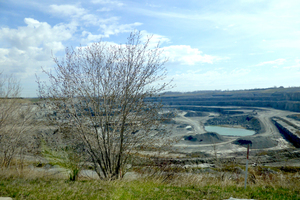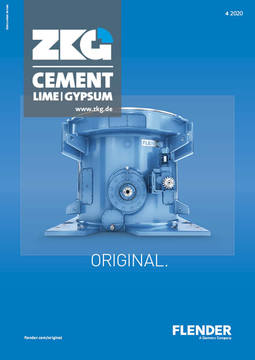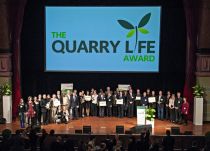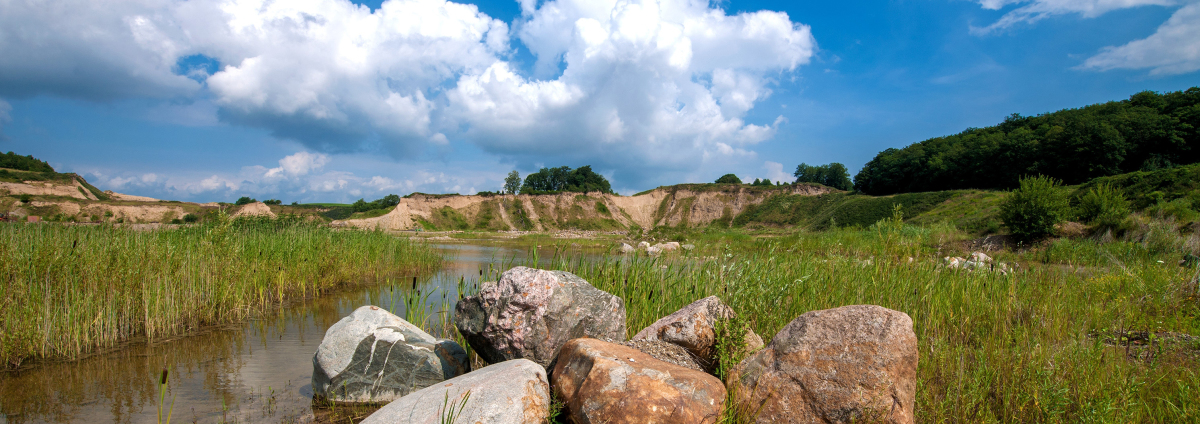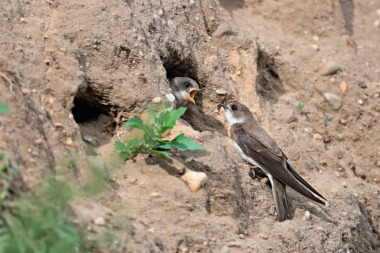Green quarries: Building a positive impact through biodiversity and ecosystem protection
Preserving and enhancing biodiversity offers the cement industry an excellent opportunity to make a positive contribution to both the environment and the societies in which it operates. This article by the World Cement Association provides an overview of the activities that the industry is undertaking worldwide with regards to biodiversity protection. The WCA, through its Environment and Climate Change Committee, actively supports its members on this issue.
Biodiversity is intimately linked to human physical and mental wellbeing, the air we breathe, the water we drink, productive soils and a habitable climate. However, as a result of rapid land use change and global warming, biodiversity is now reaching a critical tipping point. In the last 40 years, the world has lost 60 % of planetary biodiversity [1] and a further one million species across the planet are threatened with extinction.
As with other heavy industries, the cement sector has historically played a role in contributing to this issue, with detrimental impacts on biodiversity and ecosystem degradation primarily centred around limestone quarries. Here, large areas of land are stripped of topsoil, and then mined, changing the contour of the landscape over time. This, in addition to the impacts of noise, traffic, dust and other localised emissions, contributes to biodiversity losses in quarried areas.
However, as the issues of sustainability and environmental protection continue to rise up political, social and corporate agendas, companies are demonstrating that there are ways in which the cement industry can mitigate, and even reverse these impacts.
Regulation around the world
Environmental and biodiversity regulations affecting limestone quarrying vary across the world, naturally influencing how different companies approach the issue.
In the EU, for example, extensive Environmental Impact Assessments (EIAs) are required as part of the permitting process, with biodiversity protection across the whole quarry lifecycle heavily regulated and monitored. Under EU Directives, operators are required to undertake a biodiversity inventory and risk profile prior to opening the quarry, as well as putting in place biodiversity-promoting programmes during restoration. The type of activity will vary site-by-site and is dependent on local stakeholders, but may involve tree planting, the creation of wetlands, or restoring grasslands.
Biodiversity protection during quarrying and other types of mining in China is regulated by the Technical Specifications of Eco-Environmental Protection and Reclamation for Mining, issued by the Chinese Ministry of Ecology and Environment in 2013. Investigations into pre-existing biodiversity must be carried out, and if any protected species are found, either in-situ or ex-situ solutions must be implemented to mitigate adverse impacts. After quarrying is complete, soil, vegetation and surfaces must be rehabilitated so that the landscape which is left is of a similar aesthetic and quality as before quarrying. With this in mind however, biodiversity restoration was not a priority for the Chinese industry before this time, and thus the long-term impact from earlier quarries is not known.
South Korean companies must adhere to both the Environmental Impact Assessment and Management of Mountainous Districts Acts prior to quarrying, as well as carrying out mandatory restoration plans after quarrying is complete. The quarries are also subject to rigorous compliance checks throughout the process.
Taking the initiative
One South Korean cement group has chosen to go beyond government regulations and is the first private company in the country to take the lead in the ecological restoration of national forests. As part of a large-scale habitat restoration project, and in cooperation with conservation agencies, it aims to systematically restore endangered species in the vicinity of its quarries, including the red dotted moth butterfly, scops owl and the flying squirrel [2].
In some regions, for example in Europe and Turkey, national cement and aggregate associations work alongside governments to protect and restore biodiversity, by creating their own parallel guidelines and regulations. This commitment to environmental protection is exemplified by several active and reclaimed quarries across Europe being named ‘Natura 2000’ [3] sites. These sites are protected areas within the EU, home to the region’s rarest and most vulnerable species and habitats, selected according to strict scientific criteria. These areas can also provide educational or recreational spaces for local communities to enjoy.
Globally, some larger cement producers have also worked in partnership with environmental NGOs, such as IUCN, WWF and BirdLife International, to help manage biodiversity at their quarrying sites.
Inconsistent approaches
However, for some countries at the other end of the spectrum, no government biodiversity legislation exists, and ecosystem protection is left to individual companies to manage. Furthermore, many companies adhere only to local regulations, which often only require the bare minimum needed to prevent ecosystem harm, instead of embracing global best practices to actively promote biodiversity restoration. In such countries, smaller cement and aggregates companies often have no measures in place to deal with biodiversity, meaning that negative effects on biodiversity are difficult to mitigate and the long-term impacts of quarrying are not known.
Still progress to be made
It is clear that despite progress in some areas, the industry as a whole has a long way to go when it comes to engraining the preservation of biodiversity in quarrying practices, and for regulatory standards to be less disparate across the world.
For those that do recognise the importance of preserving biodiversity and look to embrace higher standards, quarry reclamation provides an excellent opportunity for cement companies to contribute positively towards both the environment and local communities. Furthermore, this can be done using existing technology and knowledge at a relatively low cost.
Replanting native vegetation and reforesting the area is just one benefit of thoughtful quarry reclamation. An effective restoration programme will improve slope stability which minimises the risks of landslides, improve water retention, reduce soil erosion and provide natural areas for local communities to enjoy. Furthermore, active quarries themselves can be places for biodiversity to flourish. For example, in the UK, the protected sand martin often nests in exposed sandy quarry faces.
Nevertheless, it must be emphasised that reclamation and restoration of an area is only part of the solution. Companies have to take responsibility for monitoring, and acting to protect, endangered species and habitats that exist in an area designated for quarrying.
Preserving and protecting biodiversity before quarrying begins needs to be at the forefront of any quarry biodiversity plan in order for cement producers to have a net positive impact on the ecosystems in which they operate.
WCA’s role in promoting quarry biodiversity
As a result of the alarming figures reported on biodiversity loss and ecosystem destruction worldwide, WCA views biodiversity as a crucial part of the industry’s sustainability agenda, alongside the reduction of harmful emissions and waste co-processing.
Biodiversity and ecosystem protection are also reflected in the UN’s Sustainable Development Goal 15: ‘Life on Land’. WCA is helping its members to work towards this goal by sharing best practices and providing opportunities to attend forums and visit sites that showcase industry-leading approaches to tackling biodiversity issues.
It is also working to raise awareness of the issues surrounding quarrying and biodiversity, prompting companies to prioritise protective measures in their own operations.
With this in mind, a WCA Member Forum on ‘Green Quarrying’ at Asia Cement’s Hualien plant and quarry will take place in Taiwan in mid-2020. The Forum will allow members to take part in best-practice and knowledge sharing with experts from Asia Cement, to help them implement biodiversity-boosting strategies in their own operations.
Asia Cement Corporation has operated the 400 ha Sin Chen San quarry at its Hualien site since 1973. Since that time, in line with the company spirit of “harmonious co-existence of industrial development and environmental protection”, the quarry has been continuously restored and revegetated, using innovative technologies to boost tree growth and allow for large scale planting of saplings.
The reforested area now covers over 10000 m2 and is home to more than 400 native tree species, as well as a dedicated butterfly eco-park with 35 species [4]. The site has won numerous awards including the prestigious Green Leadership Award at the Asia Responsible Entrepreneurship Awards, and gained global recognition as an industry leader in quarry reclamation.
A positive contribution
Overall, preserving and enhancing biodiversity represents an excellent opportunity for the cement industry to make a positive contribution to both the environment and to the societies in which it operates.
WCA encourages cement producers to integrate biodiversity into their environment plans, considering all aspects of the quarrying lifecycle, with the aim of achieving a net positive impact on their surrounding ecosystem.
WCA will continue to actively support this through the work of its Environment and Climate Change committee, as well as promoting other opportunities which have knock-on positive effects on ecosystems and biodiversity, such as the safe disposal of municipal and industrial waste and water conservation measures.
//www.worldcementassociation.org" target="_blank" >www.worldcementassociation.org:www.worldcementassociation.org
iving-planet-report-2018

